
Does the LEGO 21350 Jaws boat float?
Aktie
Duh-nuh. Duh-nuh. Duh-NUH!
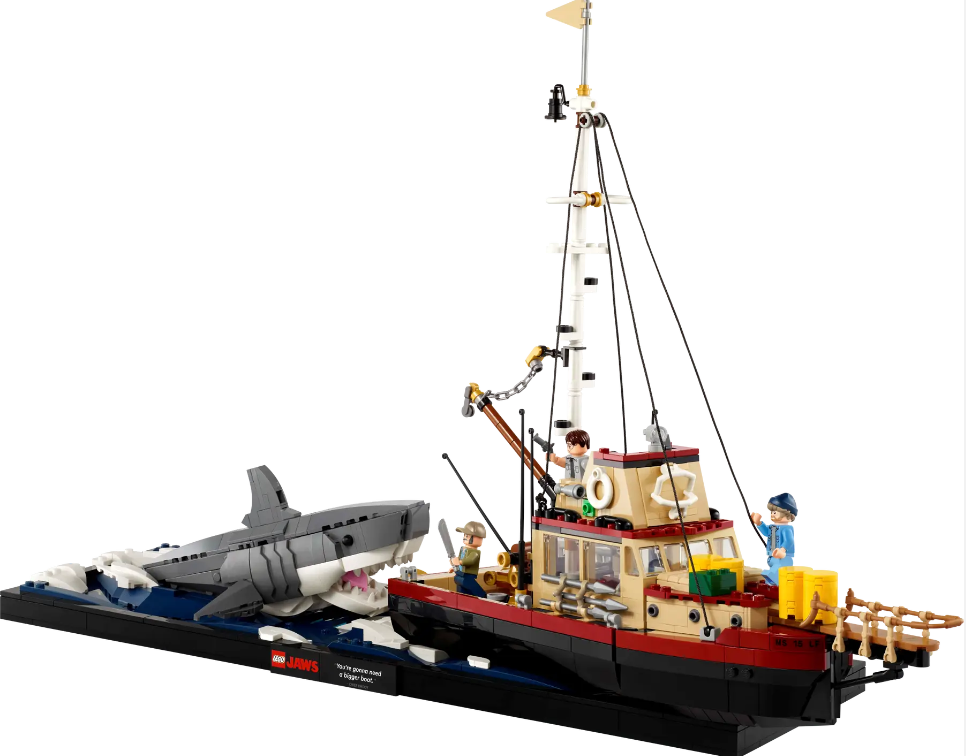
SOURCE: LEGO
Jaws (1975) redefined what was possible in film. It laid the foundation for summer blockbusters for decades to come and established Steven Spielberg as a celebrated director. Could the latest Ideas set do the same for LEGO? The 21350 Jaws set is fun, engaging, and detailed, featuring an array of inventive techniques and components, including a new Mixel hinge.
At 2TTOYS, we strive to go beyond a standard review when LEGO Group introduces a set. This can range from getting expert opinions, to tweaking sets to make them better, to trying out delightfully bizarre ideas. So I asked my kids what they thought would be the most interesting thing to do with the Jaws set. My oldest replied, “It’s a boat, right? Does it float? Could you make it float?”
Can I make it float?
"Can I make it float? I'm not sure, guys, but let's try." I'm sure there are videos and articles out there on how to make a brick boat float (try saying that ten times fast), but I didn't want to simply copy what others have already done... so I took the plunge. BrickNerd actually explored this a few years ago , so consider this a continuation of our intriguing series, "Will It Float?"
Viewing the Orca boat from the Jaws movie set proved to be quite a challenge. The boat is fragile, very fragile, sometimes to a frustrating degree. While it is an impressive set, it is not really suitable for children to play with. I had to rebuild the bow of the boat several times due to a particularly weak connection. There are a few places where I could have added ballast or air bags for buoyancy, but I did not want to modify the boat any more than was strictly necessary.
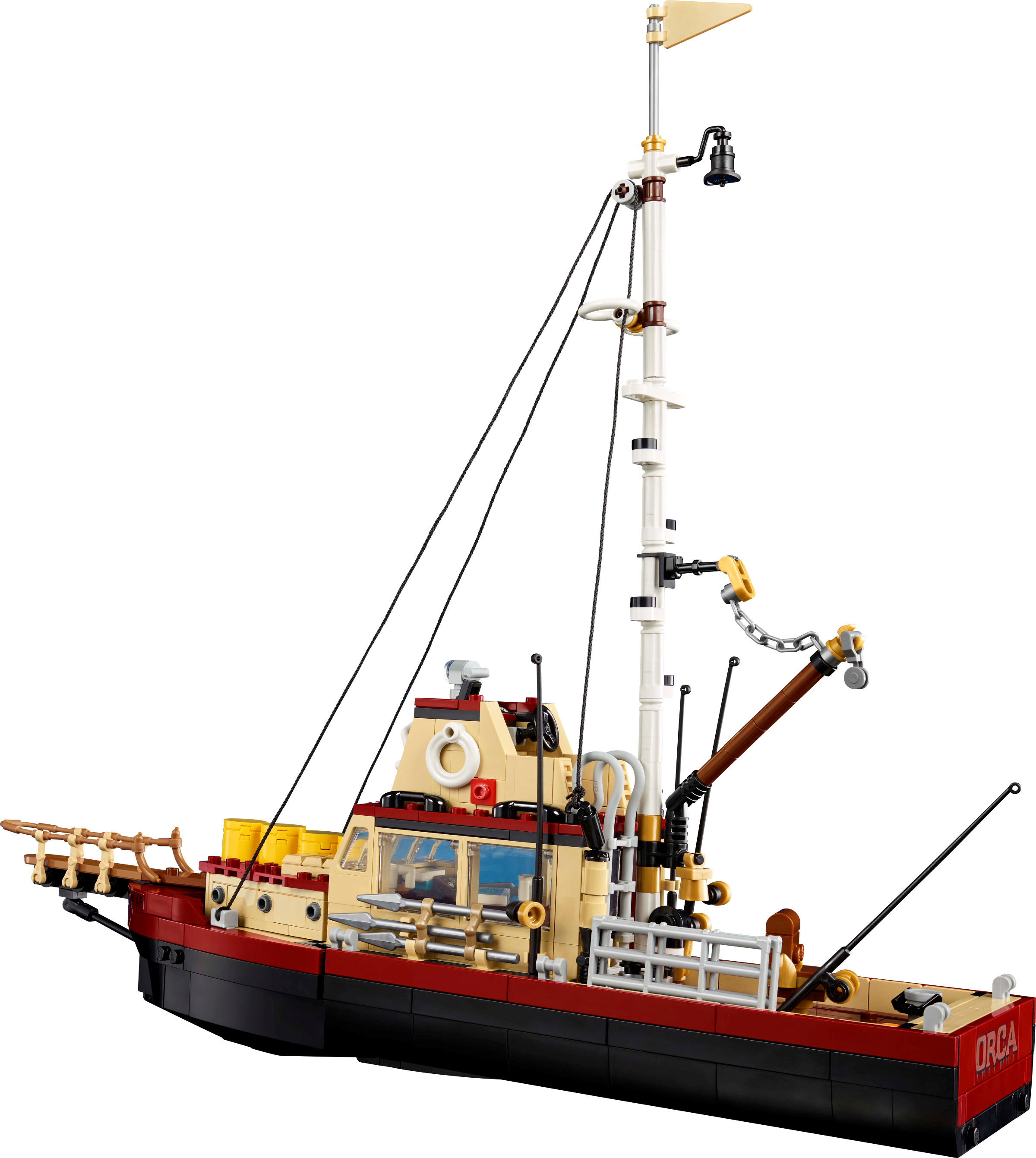
I didn’t want to use permanent glue, waterproofing solutions, or anything else that would permanently alter the set. (This is LEGO, after all, and we’ll save the radical modification of real pieces for another article on another day.) That left me with only one option: trusty wood glue. It doesn’t melt the plastic like superglue does, and I’ve found it to be relatively easy to remove from LEGO.
At the hardware store, a very confused gentleman asked me, “What do you want to float?” Not knowing what I needed, I couldn’t be of much help, especially since I had about a thousand small cracks to repair in a relatively small boat. Finally, I asked, “Do you have any foam? Maybe some kind of foam that floats?” He directed me to some foam core boards, which I took with me along with a swim noodle and some packing tape. It was time to float the boat!
Time to test
Steven Spielberg is no stranger to LEGO; he has immortalized himself and his films in the form of plastic bricks. I wonder what he would think if I took a LEGO replica of his iconic ship, placed it in a kiddie pool and would measure how long it takes for it to sink... (at BrickNerd we take scientific accuracy seriously). Now the burning question...
Will it float? It’s a question as old as time itself. I imagine our ancestors building primitive craft and steering them across ancient waters, just as my children do now. Somehow I hoped for a bit of movie magic, that the boat would float on its own without any adjustments, but alas:
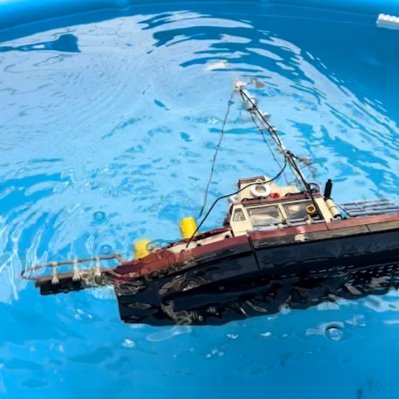
We use the TTS (Time To Sink) metric to assess how well a boat stays afloat. As you can see in the image, the boat from the kit capsized almost immediately without any change: it floated on its side for a short while as the small air chambers filled with water. However, since Bruce the Shark could attack you if your boat capsizes, we consider a capsized boat to have "sunk" for our purposes.
-
No float: 1 second TTS
Hardcore foam core
Next came some craft projects. Using regular foam board, like the kind used for school projects, I cut out a rough outline of the boat and glued the ship to the board with wood glue. I turned on my camera, held my breath, and put the boat in the water:
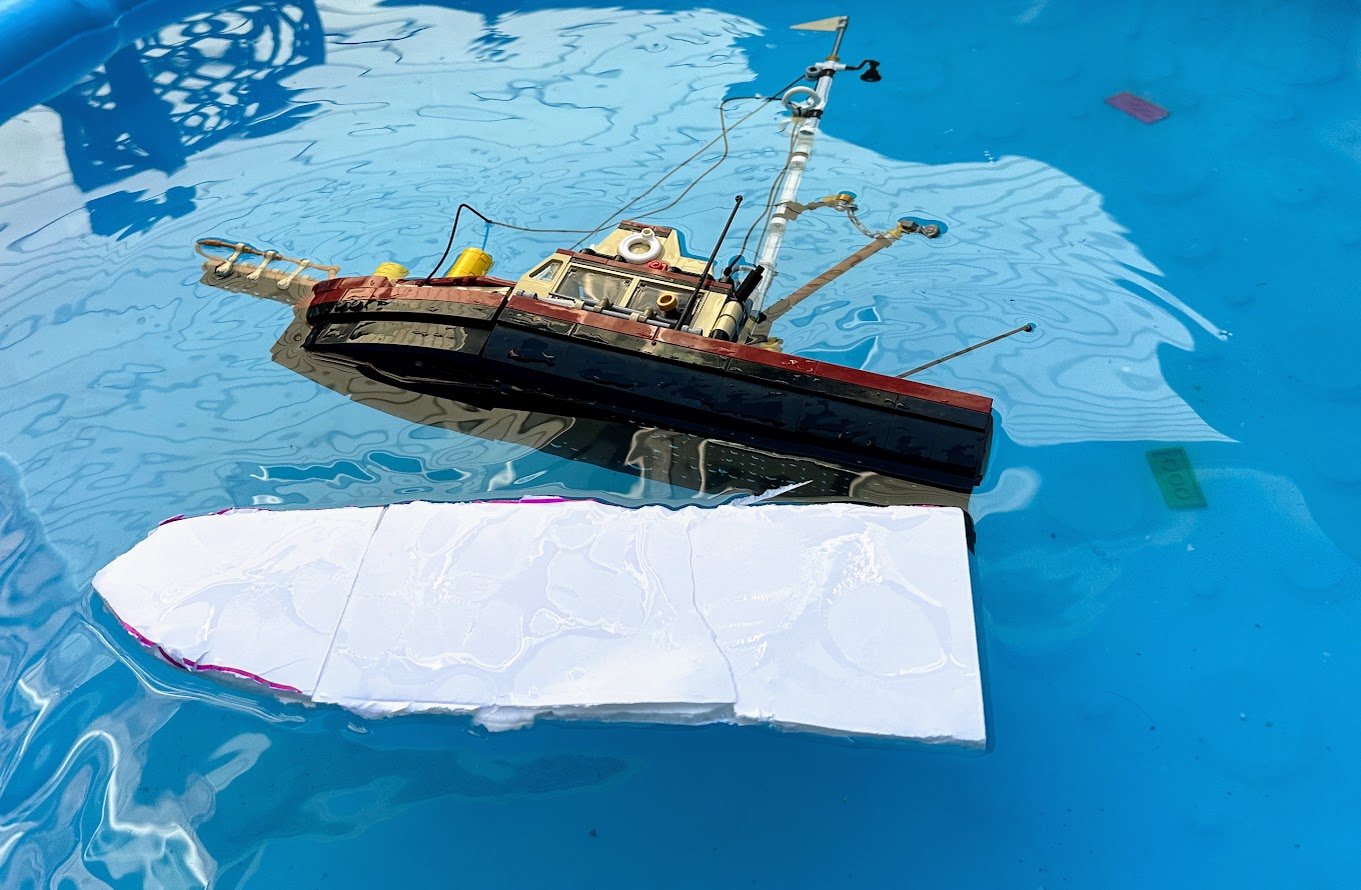
It quickly fell on its side, the glue loosened and the foam board came loose after a few minutes.
-
Foam Core Boat Bottom: 2.7 seconds TTS
Since I had to buy a whole sheet of foam board, in an attempt to get my money's worth, I thought, "You know what, can anyone float a LEGO boat? What if I float an entire LEGO set!?" Wouldn't that be cool?"
I drew a piece of foam the size of the base of the entire LEGO Jaws display set. Bruce the shark attaches to the base of the display pretty well, but the boat just sits on the base. I did a test float of just the base:

Ladies and gentlemen: it floats! Success! At this point I was feeling pretty pleased with myself. I carefully set the boat down on the display stand and held my breath:
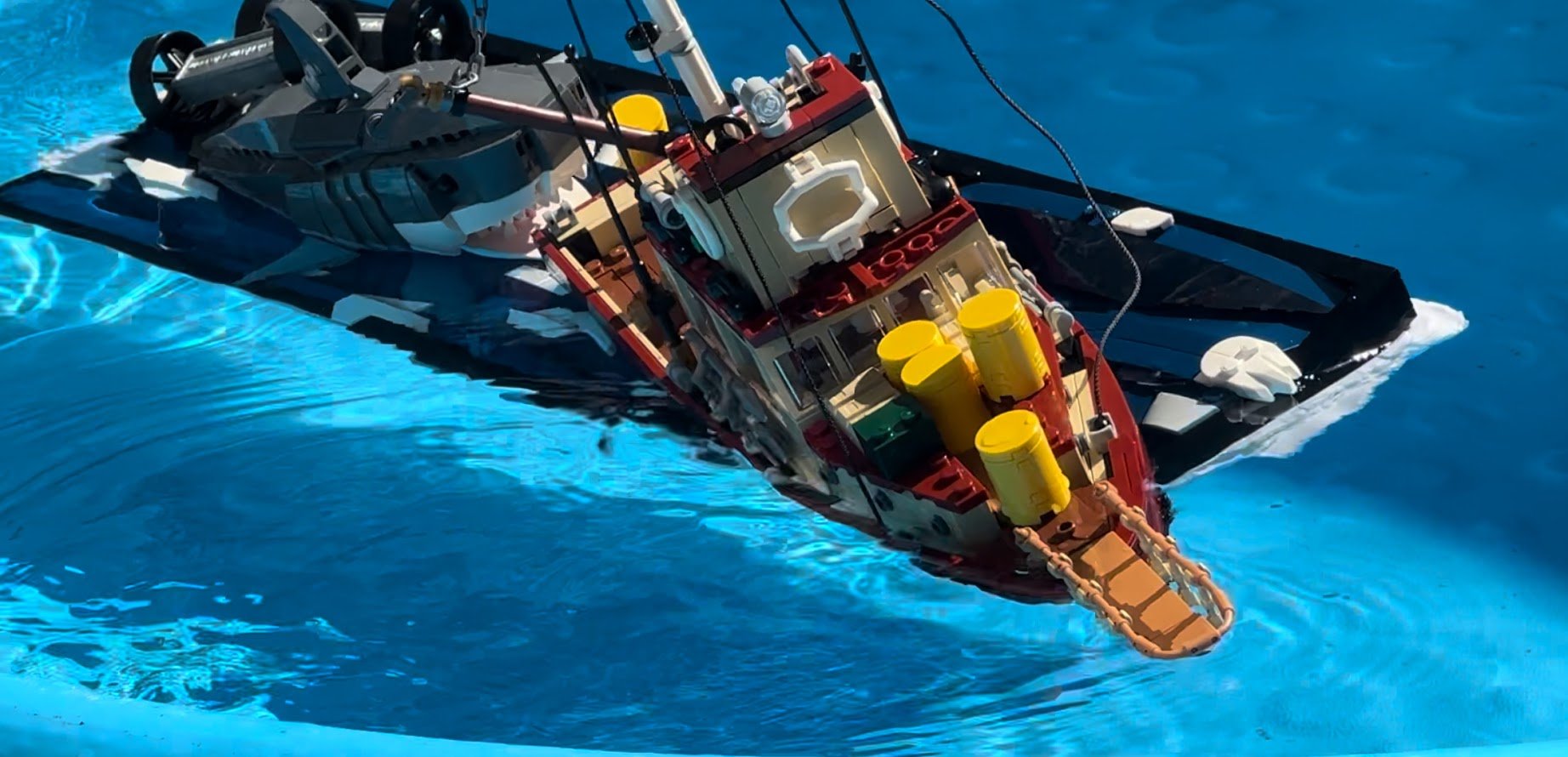
Even with some weights on the other side for balance, the weight of the boat unfortunately drags the whole structure down.
-
Foam Core Full Set Bottom: 2.2 seconds TTS
Now I don't know all that much about boats, but I think a lot of them have a keel or weight in the bottom of the boat that keeps it stable. I quickly threw together something that I thought might work out of metal, weighted Brick Derby axles, plates, and bricks. (Before you look at the next picture of my creation, remember that I said I don't know all that much about boats... but I think that's pretty accurate.)
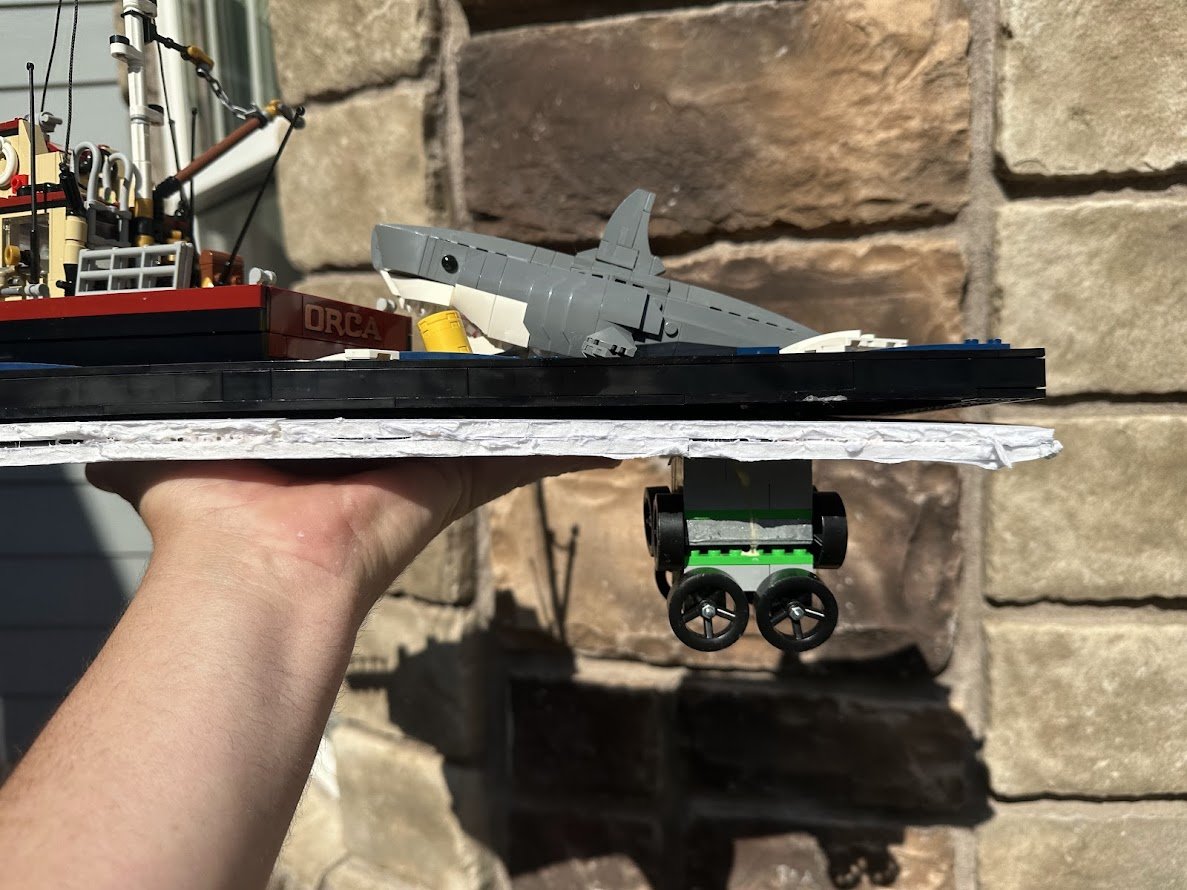
Even after doubling the size and weight of my 'keel', the extra weight at the front of the structure continued to drag the entire set down into the clear depths of the pool.
-
Foam Core Complete Set Base with Weights: 2.4 seconds TTS
As I was considering my next move, my son asked what I was doing. I said I was trying to make the whole set float, and he said, “That’s not cool. Boats are cool.” With that sage wisdom ringing in my ears, I returned to the core mission: making boats float.
Enjoying some pool noodles
Pool noodles float. People holding pool noodles float. LEGO held up by sliced pool noodle discs should float, right? Right?

Unfortunately, the boat’s weight distribution remained a problem. The pool noodles definitely have the buoyancy to keep the ship afloat — almost too buoyant. But even after trying strips instead of discs, taping them down, and using a pontoon-like design, these noodles refused to cooperate.
-
Pool Noodles: 1.8 seconds TTS
That's Saran Wrap!
At this point I was getting pretty frustrated. Also my kids were asking when I would be done with their pool so they could play. It was 35 degrees. The pressure was on!
My final idea was to create a sort of casing out of tape that would essentially waterproof the outside of the leaking brick hull. I first covered the boat with plastic wrap to protect the bricks from any sticky residue the tape might leave behind. While I wrapped this plastic wrap tightly around the outside of the boat, I carefully placed it in the pool, purely out of curiosity, and waited for it to sink:
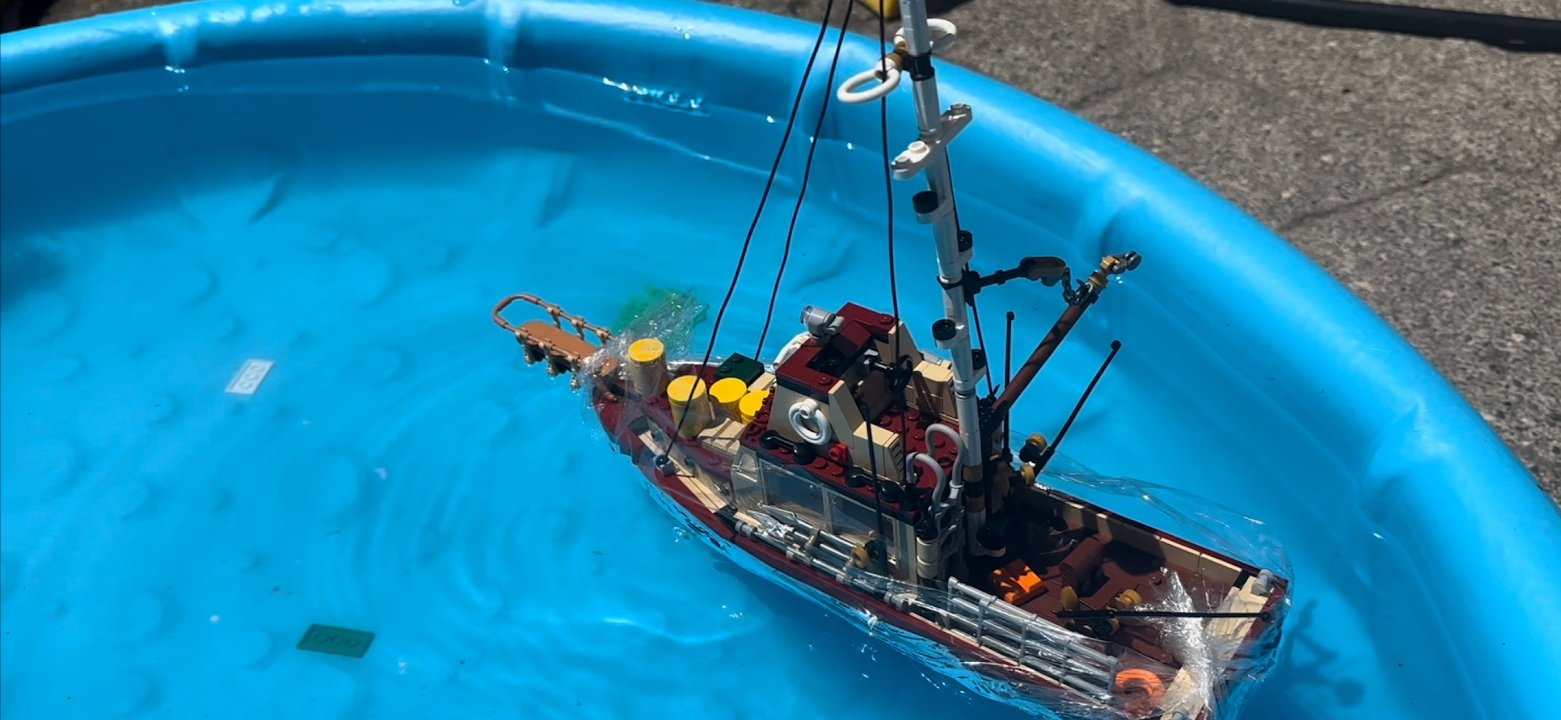
Wait, what is this!? Instead of sinking, she floated! It was a "Jaws dropper." I didn't even have to put tape on her. She floated for a full five minutes before I pulled her out. I just stood there, a little flabbergasted that the simplest technique was the best - all it took was a little plastic surgery.


